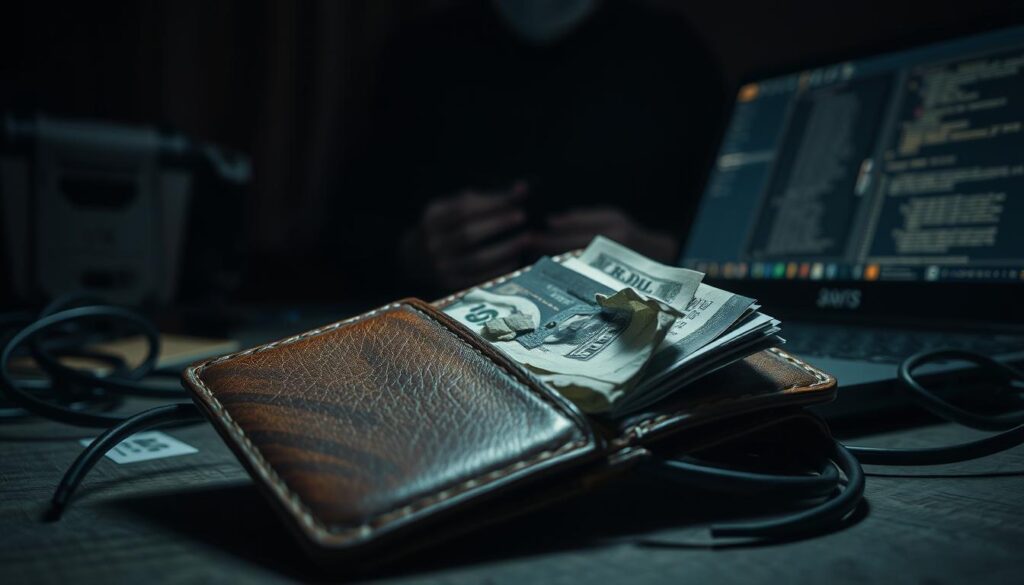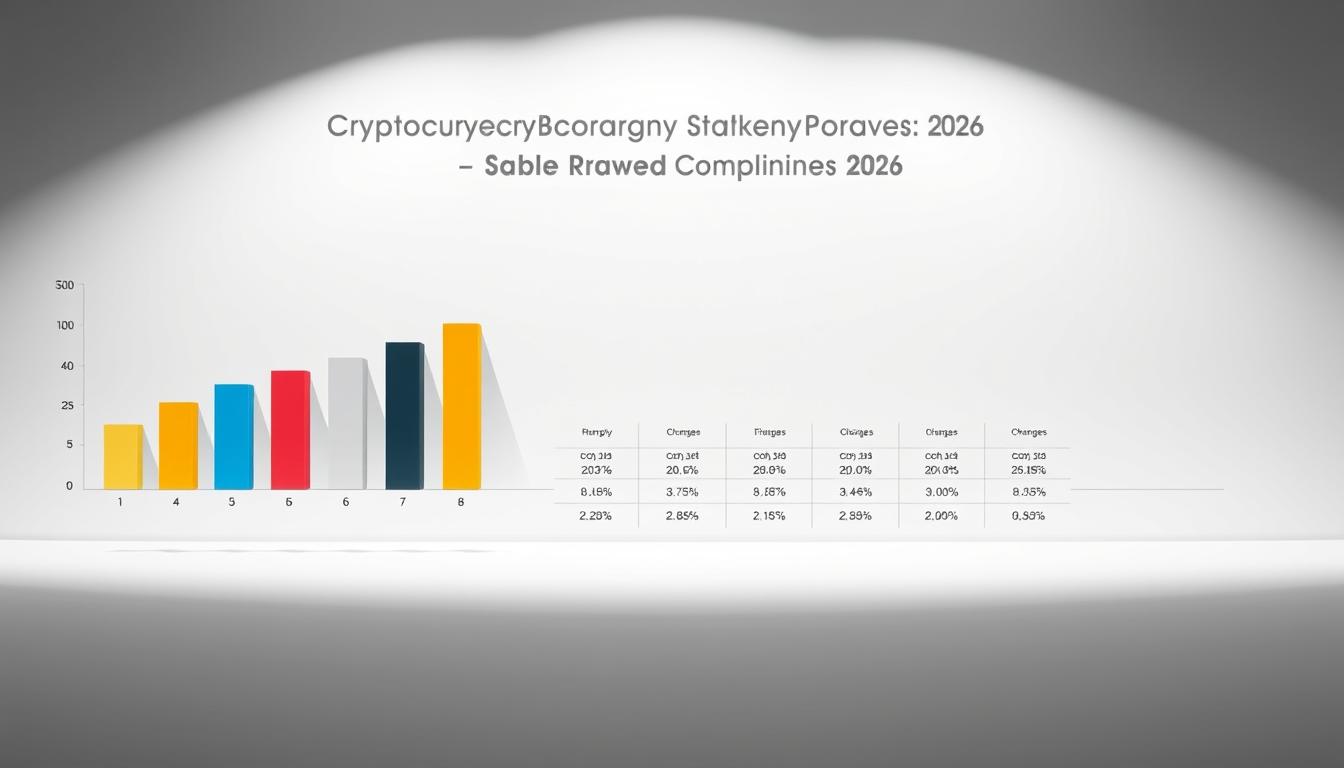Now Reading: Expert Web3 Wallet Security Best Practices Guide
- 01
Expert Web3 Wallet Security Best Practices Guide
Expert Web3 Wallet Security Best Practices Guide

This introduction lays out a clear roadmap to protect your funds and NFTs with straightforward, modern steps. Many popular tools now serve millions of users and move real value with a tap, yet most people lack a clear view of how keys and signing work.
A wallet acts as a key manager and signing tool for on-chain actions. Mistakes in setup, approvals, or device hygiene can lead to instant, irreversible loss. Attackers target seed phrases, browser extensions, and mobile apps each day.
The sections that follow explain custody options, seed phrase handling, and operational safeguards. You will learn to spot phishing, approval scams, address swaps, and deceptive dapps that trick signers into harmful authorizations.
Expect a practical defensive playbook: keep software minimal and updated, segment activity, prefer hardware for long holds, and verify every approval and destination before signing. This is an ongoing practice, not a one-time task.
Why this web3 wallet security best practices guide matters right now
Today’s threat climate turns small slips into million‑dollar disasters for collectors and new users alike.
In 2023 several public compromises showed how fast losses escalate. Kevin Rose lost over $1M in nfts, a Trust user was phished for about $4M, MyAlgo clients lost ~$10M, and Atomic saw nearly $35M vanish.
Attackers now favor stealing seed phrases and approvals because they grant immediate access to funds and assets. Phishing remains the common first step, often disguised as support or system prompts that trick users into revealing secrets.
Real consequences: blockchain transfers are transparent and irreversible, so recovery is rare. Public Wi‑Fi, outdated software, and risky browser extensions are quiet weak points attackers exploit.

| Incident | Year | Loss | Vector |
|---|---|---|---|
| Kevin Rose | 2023 | $1M+ | NFT compromise |
| Trust user | 2023 | ~$4M | Phishing |
| MyAlgoWallet | 2023 | ~$10M | Key compromise |
| Atomic Wallet | 2023 | ~$35M | Various exploits |
- Assume you are a target and adopt layered defenses.
- Small process changes — verify URLs, check addresses, slow approvals — reduce successful attacks.
Web3 wallet fundamentals: keys, custody, and control
At the heart of every account is a secret: whoever holds the private key holds control. This fact shapes how you recover accounts, move funds, and interact with dapps. Misunderstanding custody leads to preventable losses.
Not your keys, not your crypto: private keys and recovery
Private keys are the cryptographic material that signs transactions. A seed phrase (BIP‑39) is a human‑readable form of the seed used to derive many addresses (BIP‑32).
That single seed phrase is your recovery phrase. If someone gains it, they can restore and drain accounts. Store it offline and treat it like cash.

Custodial vs. self‑custodial: who holds the keys?
Custodial platforms keep private keys for you. They offer convenience and recovery but require trust and permissions to withdraw.
Self‑custodial wallets put control in your hands. They require responsibility: you alone manage backups and security.
- Definition: a wallet signs transactions; coins live on the blockchain.
- Authority: private keys equal full control and portability across compatible applications.
- Standards: BIP‑32/39 simplify backups but centralize risk in one seed.
Hot, cold, and paper: choosing the right wallet mix for funds and transactions
Match access to protection: keep what you use often within reach and move savings into isolated storage. This reduces exposure while keeping daily activity simple.
Hot wallets (browser or mobile) suit low-value, high-frequency activity like claiming drops, minting, and interacting with applications. Examples include MetaMask and Phantom. They share the device OS and network, so keep extensions minimal and use OS updates, antivirus, and a trusted VPN when transacting.

Hardware and cold storage
Hardware devices such as Ledger and Trezor isolate keys and require on-device confirmation. They are the default for long-term holdings. Still, a compromised computer can display altered addresses—always confirm address and amounts on the device itself.
Paper seeds and offline recovery
Paper or steel backups store BIP-39 seed phrases offline. They provide durable, electronic-free recovery if stored properly. Brute-forcing a seed is infeasible; the risk is physical loss or theft, so keep backups redundant and secret.
| Type | Use case | Tradeoffs |
|---|---|---|
| Hot wallet | Daily transactions, nfts, dapp testing | Convenient but inherits device risks |
| Hardware (cold) | Long-term storage, large funds | Higher cost, stronger isolation |
| Paper/steel seed | Offline recovery | No electronics; needs careful physical storage |
- Segment activity: keep a daily-use hot wallet separate from cold storage.
- Consider a dedicated machine or VM for hot activities to lower exposure.
Present-day threat landscape: malware, phishing, and smart contract traps
Today’s landscape mixes clipboard hijacks, fake support scams, and malicious contracts that quietly steal funds. Attackers now use both code and social engineering to turn routine actions into losses.
Rising hacks and social engineering
Malware can swap clipboard addresses so a pasted recipient becomes an attacker address. Always verify pasted addresses character by character.
Some infections also alter on-screen transaction details. That makes on-device confirmation critical so you can see the true destination and amount.
Impostors pose as official support—Apple Support is a noted example—then harvest iCloud backups that contain seed phrases or recovery notes.

Approval scams and malicious dapps
A single signature to a malicious contract can grant unlimited token spending. Attackers then drain balances over time without more interaction.
Many stolen accounts result from approving harmful code in unknown dapps or from lookalike sites promoted via ads or DMs. Verify contract addresses from official project channels only.
| Attack type | Vector | Immediate mitigation |
|---|---|---|
| Clipboard hijack | Pasted recipient address altered | Verify full address; type or use QR from trusted source |
| On-screen fraud | Malware changes UI/amounts | Confirm on hardware or trusted device display |
| Approval scam | Malicious smart contract approval | Review permissions in plain English; revoke with permission manager |
| Social engineering | Fake support, urgent DMs, QR traps | Treat unexpected prompts as hostile; validate via official channels |
Operational notes: avoid unknown dapps, use trusted permission managers to revoke allowances, and prefer providers that publish audited key handling. Slow down. Treat every unexpected prompt as an attack until proven safe.
Device and browser hygiene: building a secure base layer
A clean device and a cautious browser form the foundation of safe on‑chain activity. Start by treating the primary machine as a critical access point and minimize what runs on it. Small steps reduce attack surface and lower the chance of covert code reaching accounts.
Keep your system patched. Enable automatic OS and browser updates so known flaws close quickly. Prune extensions to only those you need; each add‑on can be an entry point for malicious code.
Isolate daily transactions. Use a dedicated device or a virtual machine for hot wallet transactions and testing. That environment should never download random files, play games, or browse untrusted sites.
Network and device controls
Avoid public Wi‑Fi when accessing accounts. If you must, use a vetted VPN or cellular data to limit interception. Disable clipboard managers and avoid storing seed fragments in autofill or cloud sync.
Buy hardware from the manufacturer and verify firmware on first boot to detect tampering. Use reputable endpoint protection that does not intercept sensitive inputs, and require unique passcodes or biometrics for device unlock.
- Log out of browser profiles used for wallets and disable password auto‑fill on transaction pages.
- Separate personal and wallet browsing profiles to prevent cross‑contamination.
Keys and seed phrase protection: generation, storage, and recovery
Protecting your private keys starts at creation — design the process so compromise is unlikely from day one. Generate seeds on an air‑gapped device when possible or use a well‑known hardware device with verified firmware.
Generate keys securely
Use a clean, offline environment for deterministic key creation. Reset a device before key generation or use an audited hardware unit that shows seed creation on device. That prevents hidden code from leaking the seed.
Store seeds offline
Never save a seed phrase to cloud notes, screenshots, or email drafts. Those services sync and can be breached.
Keep multiple offline backups on paper or steel and store them in geographically separate, secure locations to reduce physical risk.
Recovery, two‑factor and device protections
Run recovery drills with a test account so backups are readable and complete. Use local protections — PINs, biometrics, and secure enclaves — but keep the seed itself offline.
Two‑factor authentication helps protect logins but does not replace keeping your seed secret. Always verify every prompt on the device when signing transactions; the device view is the final check.
- Generate seeds offline or on verified hardware with known firmware.
- Never type or paste a seed into websites; use the original recovery flow only.
- Redundant paper or steel backups reduce single-point failures.
| Task | Recommended | Risk if ignored |
|---|---|---|
| Key generation | Air‑gapped device / audited hardware | Seed leakage at creation |
| Seed storage | Paper or steel, offline, redundant | Cloud sync or screenshots compromise |
| Recovery testing | Periodic drill with test wallet | Unreadable backup or missing steps |
For more on choosing self‑custody options and securing devices, see self-custody options.
Safer transactions: approvals, contract risk, and treasury controls
Approvals and contract calls are common attack surfaces — handle them with deliberate checks.
Treat token approvals as high‑risk permissions. Use trusted permission managers to review and revoke allowances after interacting with new dapps. Minimize scopes, set expirations where supported, and revoke any approval you no longer need.
Always confirm destination addresses and amounts on the device itself. On‑device confirmation stops manipulated displays or clipboard swaps from redirecting a transaction.
Use multiple accounts and burner addresses
Segment assets across several wallets: one for daily transactions, one for savings, and one reserved for NFTs. This layering limits exposure when a single account is compromised.
For airdrops and experimental dapps, use burner wallets. They isolate risk so a breached account does not endanger main balances or collectibles.
Multisig and treasury controls for organizations
Multisig adds shared control. Require multiple signers and set thresholds to make unauthorized transfers harder. Define signer roles, rotation policies, and an incident playbook for lost keys or personnel changes.
| Role | Use | Benefit |
|---|---|---|
| Daily account | Routine transactions, small trades | Convenience, limited exposure |
| Savings / cold | Long‑term holdings | Isolation from hot activity |
| Burner | Airdrops, unvetted dapps | Containment of compromise |
- Document which contracts and dapps may interact with each account to avoid accidental approvals.
- Test with small amounts and use read‑only exploratory accounts before committing funds to new protocols.
- Where possible, run treasury operations on a separate device to add a physical layer of control.
web3 wallet security best practices guide: your actionable checklist
A simple checklist keeps setup, approvals, and backups consistent. Use it every time you add a device, link a new service, or move funds.
Procure devices and verify firmware
Buy hardware from manufacturers only. Inspect seals, record serials, and verify firmware on first boot. Initialize devices offline when possible to limit exposure.
Address, domain, and transaction checks
Bookmark official domains and avoid search ads. Confirm URLs and contract addresses before any interaction.
Verify full addresses—first, last, and random middle characters—and confirm the same data on your device screen before approving a transaction.
Recovery, backups, and ongoing reviews
Keep at least two offline copies of your seed on durable media in separate, tamper‑evident containers. Run a recovery drill on a spare device and document every step.
- Revoke allowances regularly, starting with high‑value tokens and unknown contracts.
- Keep a written inventory of accounts, multiple wallets, and where backups live.
- Start with small transactions on new code; scale up after verification on trusted explorers.
Conclusion
Once assets move on the blockchain, recovery is seldom possible—prevention must be the priority.
Adopt layered defenses: verify every approval, keep devices tidy, and safeguard private keys and seed backups offline.
Self‑custody grants freedom and responsibility. Maintain control of your keys, test recovery, and split assets across accounts to limit exposure.
Audits and whitehats lower protocol risks, but individual habits matter most. Keep software updated, refine procedures, and treat every unexpected prompt as hostile.
Practical optimism: by validating each step, planning for recovery, and using layered controls, you can reduce risk and protect funds and assets on any platform.
FAQ
What should I do first to protect my crypto assets?
Start by separating funds into at least two accounts: one for daily use and one for long-term storage. Acquire a manufacturer-backed hardware wallet, update its firmware, and move the bulk of your holdings into cold storage. Use a hot account only for small, routine transactions and interactions with applications.
How do private keys and seed phrases differ, and which do I protect?
A private key is a single credential tied to one address. A seed phrase (BIP-39) can derive multiple private keys for an entire account. Protect seeds offline—engrave on steel or write on paper stored in secure locations. Never store seeds in cloud drives, screenshots, or email.
Is it safer to use a custodial service or manage keys myself?
Custodial services like Coinbase or Gemini manage keys for you, reducing personal responsibility but introducing counterparty risk. Self-custody gives full control and liability. Choose custody based on trust, technical skill, and how much you value direct control versus convenience.
How do I reduce risk when interacting with decentralized applications?
Use dedicated burner wallets for trials and airdrops, review smart contract permissions before approving, and revoke unneeded approvals with tools like Revoke.cash or Etherscan. Limit allowance to minimum necessary amounts and confirm transactions on a hardware device whenever possible.
What steps prevent phishing and social engineering attacks?
Verify URLs and app origins, bookmark legitimate sites, and avoid links from unsolicited messages. Never enter your seed phrase into any website or form. Confirm identities in voice or video calls and be skeptical of urgency and promises of free tokens.
How should I store backup copies of my recovery phrase?
Use multiple, geographically separated offline backups. Durable options include steel plates or engraved metal. Store at least one backup in a safe deposit box or trusted physical safe. Test recovery periodically in a secure environment to ensure backups work.
Can I rely on two-factor authentication and biometrics for protection?
2FA (TOTP apps like Google Authenticator or Authy) and biometrics add useful layers for custodial accounts and device access but do not replace seed protection. Biometric locks can be bypassed; avoid storing private keys in cloud-backed biometric vaults.
Why use multiple wallets and how should I organize them?
Multiple accounts limit loss from compromise. Keep a hot wallet for daily use, a hardware-backed account for savings, and burner addresses for risky dapps. Use multisig for shared treasury control and split high-value assets across independent cold wallets.
What is multisig and when should teams use it?
Multisig requires multiple approvals to move funds, reducing single-point failures. Teams, DAOs, and organizations should use multisig for treasury control to prevent insider theft and accidental transfers. Combine hardware devices and reputable multisig services for stronger protection.
How do I verify a hardware device is authentic and up to date?
Buy directly from manufacturers like Ledger or Trezor or authorized resellers. Verify device packaging and firmware signatures during setup. Keep firmware and companion apps current and follow vendor instructions to avoid tampered units.
What network precautions should I take when transacting?
Avoid public Wi‑Fi and untrusted hotspots. Use a trusted VPN when necessary and consider a dedicated insulated device for sensitive operations. Disable unnecessary browser extensions and limit exposure to unknown websites.
How can I detect malicious smart contracts before approving them?
Read contract source code or rely on audits from reputable firms. Use tools like Etherscan to inspect token contracts, check community reviews, and run approvals with limited allowances. When in doubt, interact through read-only queries or consult developers with expertise.
What recovery plan should I prepare in case of loss or theft?
Create a documented recovery playbook that lists procedures, backup locations, and trusted contacts. Store redundant offline backups, test recovery in a controlled environment, and use hardware multisig so that losing a single device won’t lock access to funds.
Are paper backups still acceptable for seed storage?
Paper backups are acceptable if stored securely and protected from fire, moisture, and theft. Prefer steel backups for durability. If you use paper, laminate it and place copies in secure, separate locations such as safes or safety deposit boxes.
How do approval scams drain accounts, and how can I prevent them?
Approval scams trick users into granting unlimited token allowances to malicious contracts. Prevent them by setting allowance limits, revoking permissions after use, and reviewing transactions on-device. Use approval management tools to audit and revoke risky grants.
Should I interact with NFTs and marketplaces from the same account I use for savings?
No. NFTs and marketplaces often require repeated approvals and carry higher scam exposure. Use a separate hot account for collectibles and marketplace bids while keeping high-value savings in a hardware-backed cold account.
What is the role of transaction confirmation on hardware devices?
Hardware confirmation forces you to physically validate recipient addresses and amounts on a secure screen, preventing remote tampering by malware. Always confirm on-device for any transaction moving significant value or changing approvals.
How often should I review and prune connected app permissions?
Review connected applications and token approvals monthly or after any suspicious activity. Revoke unused permissions immediately. Regular audits reduce the surface area attackers can exploit and limit long-term exposure.
Are automated contract audits enough to trust a smart contract?
Audits improve confidence but are not foolproof. Combine audits with source verification, community scrutiny, and limited initial exposure. Monitor runtime behavior and be cautious with novel or unaudited protocols.

















